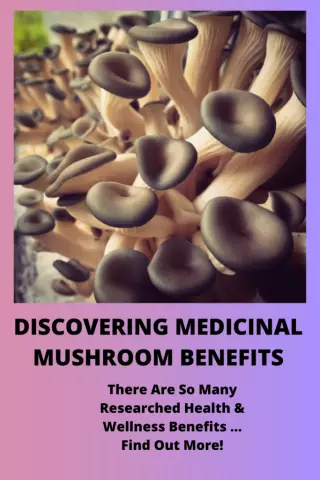- Author Rachel Wainwright [email protected].
- Public 2023-12-15 07:39.
- Last modified 2025-11-02 20:14.
Lakonos
Lakonos or American phytolacca is a poisonous plant, reaching a height of three meters. Phytolacca has a vertical root, thick branched stems and elliptical leaves.

Lakonos blooms from June to August, and in September dense clusters of shiny berries ripen, which at first have a dark red color, and then become almost black.
Distribution area and species of lakonos
In nature, there are about forty varieties of the lakonos plant. Its homeland is North America, but over time, American Phytolacca has spread everywhere and is now found on other continents.
Lakonos has taken root well in the Transcaucasia and the North Caucasus, as well as in Ukraine. Usually he settles in the area of residential areas or along roads, but does not like the heat and prefers shaded areas.
Medicinal properties of the lakonos
Due to its healing properties, lakonos is used in folk medicine for hypertension, headache, radiculitis and kidney disease. The plant has a laxative, diuretic, anti-inflammatory, expectorant and antihelminthic effect. Homeopathic remedies are prepared on the basis of American phytolacca. Of the other properties of the lakonos, it is worth noting its beneficial effect on the work of the heart and blood vessels.
For medicinal purposes, a decoction of the leaves of the plant is used not only for internal, but also for external use. For example, with boils, seals, hemorrhoids or skin lesions. Alcohol tincture rub the back with radiculitis and joints with arthritis.
However, it should be remembered that lakonos is a poisonous plant and can only be consumed in appropriate proportions and on the recommendation of a doctor.
Dosage forms of the plant lakonos
In the manufacture of medicines from phytolacca, all parts of the plant are used - leaves, stems, roots and berries. From them, craftsmen create decoctions, tinctures, syrups and ointments. The root and juice of the lakonos have the strongest healing effect, but the fruits are the least saturated, but that is why they are safest when consumed inside. The stems, leaves and fruits of the American phytolacca are harvested first and then proceed to the processing of the root part.
The root of the lakonos plant can only be used if its color is yellowish-white. If the root is red, then it is strictly forbidden to use it, since it contains a large concentration of poisons.
The fruit of the lakonos is dried in a well-ventilated area, the roots are dried in an oven or oven. The finished medicine ingredients are folded into woven bags and stored in a dry place.
Lakonos recipes
- Medicine for the treatment of joints. According to this recipe, laconos (leaves) are poured with warm water, covered with a lid and left in a dark place for 2 weeks. The tincture must be used within a month to rub the joints and back, you can also make compresses from it;
- Tincture for the treatment of otitis media, laryngitis and tonsillitis. This recipe from the lakonos is prepared as follows: 10 g of plant roots are poured with 100 ml of alcohol, the medicine is allowed to brew for 2 weeks. It is taken orally 15 drops every day (3-4 times a day). Also, this remedy strengthens the immune system well.
For sore throat, rheumatism and radiculitis, plant juice is used. Due to the healing properties of the lakonos, disturbances in the work of the gastrointestinal tract can be cured. To do this, you need to eat 2-3 fruits in the morning and evening.
All recipes from the lakonos are prescribed strictly on the recommendation of a doctor, since the plant is poisonous and can cause serious harm. In case of an overdose, convulsions, vomiting, diarrhea, paralysis, headache, dizziness, and even respiratory and cardiac arrest occur.
YouTube video related to the article:
Found a mistake in the text? Select it and press Ctrl + Enter.






